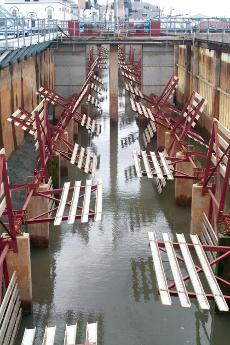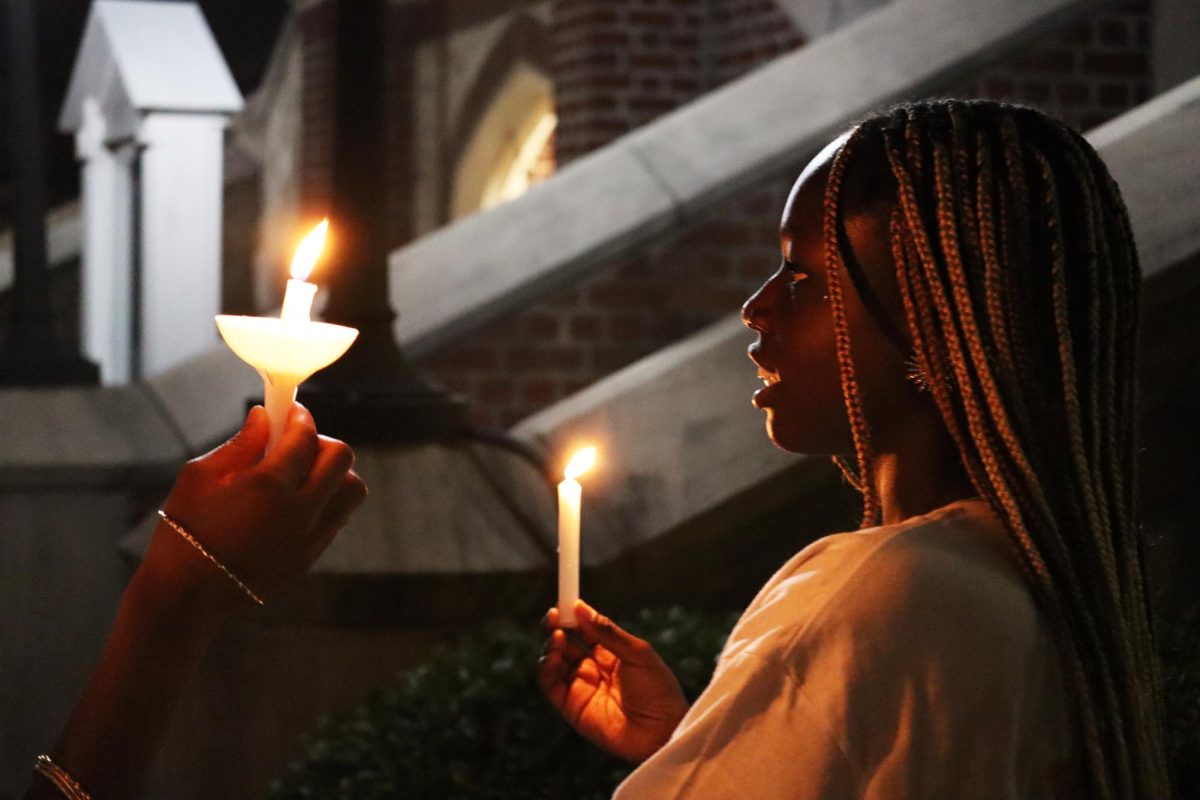Aging equipment, a disrupted repair cycle, and diminished personnel following Katrina have sent a flood of frustrations to the New Orleans Sewerage and Water Board.
This may portend a citywide crisis, according to Board purification superintendent Marvin Russell.
Unable to depend on the old, unreliable equipment at its former facility, the Board primarily uses pumps at its newer plant to create drinking water. But with one of the main pumps broken, one mechanical failure in the remaining pumps may compromise the facility’s ability to produce an adequate supply of drinking water for the city, according to Russell.
While Katrina may have left the board’s physical facility relatively unscathed, it did succeed in disrupting a system that relies on predictability to function properly.
“We’re a system that has enjoyed redundancy – redundant pumps, redundant systems of treatment. In the past, when there were breakdowns, you just use something else,” said Russell. “We’re to the point where we have too many things not working right and unfortunately, one more major breakdown may force us into a situation where we can’t deal with it.”
Russell said board personnel took a severe blow following the storm, contributing to a delay in fixing the broken pump.
“Everything we have here is custom made – it’s not just something you buy off the shelf,” he said. “Our machine shop, which in the past has made those pieces for us, used to have 157 people in the maintenance department. The maintenance department now has 58 (people).”
Besides reducing the Board’s maintenance team, Katrina has forced time and money normally reserved for repairs to be allocated elsewhere.
“What Katrina did to us was it disrupted our cycle. It disrupted by absorbing the monies that would have been used, and the time that would have been taken, to do those capital repairs and improvements and pushed them back, and made monies impossible to get for those things,” Russell said.
“So as we look into the future – not only at our critical needs today, but as we look down the road three years, five years, ten years -, we know that Katrina at least disrupted that to the extent that those repairs would not be made.”
With repairs on hold and existing equipment not getting any newer, the Sewerage and Water Board is considering possible solutions to a potentially imminent problem.
According to Russell, the Board is exploring the possibility of using modular water treatment units, which would temporarily compensate for the broken pump as maintenance continues to make repairs. However, he adds, putting in these units may take up to 18 months – a long period of time that the city may not have.
Meanwhile, if the existing pumps are unable to process enough water, the plant will reach a point where a decrease in water pressure is necessary for providing an adequate supply to the city – a point that Russell says the Board is “trying everything” not to resort to.
Another option the Board would like to avoid, according to Russell, involves turning off the water supply in certain neighborhoods that were uninhabited prior to Katrina.
“We do not – I emphasize – want to do that,” said Russell. “Our board has the policy that we will be there for every person living here and returning to New Orleans.”
In the more likely event that a decrease in water pressure becomes imperative, Russell says that the goal of the Board would be to keep pressure above 25 pounds per square inch. However, Loyola is capable of providing water in such a situation.
According to Chip Smith, an assistant director of Loyola’s Physical Plant, all of Loyola residential halls and four of its academic buildings contain domestic “booster” pumps that compensate during times when water pressure is low.
“(The pumps) take incoming city water and boost it enough to take it to the top of the building,” Smith said.
According to Ann Moss, an assistant director of Physical Plant, the pumps are defenseless only in the event of extremely low pressure – as low as two or three pounds.
“If it goes extremely low, there’s a point where the booster pumps don’t help,” she said. “If the city doesn’t give us water, no pump in the world will bring it in. We’ve taken some measures to mediate the problem.”
While Loyola may be safe if water pressure drops, the question remains whether the added work necessary in providing water to buildings during low water pressure will increase utility rates.
Smith claims that the extra work of booster pumps may affect rates “somewhat, but not a tremendous amount.” According to Smith, energy conservation is a bigger factor in keeping utility rates low.
“One hundred lights left on would be a bigger expense than the booster pumps would be to run,” said Smith.
According to Russell, this may change in the future, as the Sewerage and Water Board has proposed rate increases – pending the approval of the New Orleans City Council – in order to fund necessary repairs. The Board is also pursuing aid from the federal government and from foundations with loans and grants, he said.
The Federal Emergency Management Agency has emerged as an option for many storm-damaged institutions seeking aid, but has limited capacity in the situation with the Water Board.
@Subhead:FEMA ASSESSING BOARD’S PLEAS
@Body Text:According to an e-mail to The Maroon from FEMA representative Andrew Thomas, “FEMA’s Public Assistance Program is authorized, not by policy but federal law – the Stafford Act – to only fund repair of disaster-related damages; it is not authorized to fund pre-existing damages resulting solely from pre-disaster neglect, i.e. deferred maintenance.
What constitutes pre-existing damages or deferred maintenance is where conflict arises, according to Russell.
“In the year-and-a-half since Katrina, FEMA sometimes has a lot of disagreements as to what exactly is storm-related or deferred maintenance.
“There were many things that were in the rotation for maintenance. We call that ‘deferred’ – they would have been done in the normal cycle of things. Katrina not only threw our schedule out of whack for maintenance, but it also caused us to use up all of our budget for immediate costs, which now FEMA’s questioning,” he said.
But FEMA is involved in an extensive review process to assess this situation and possibly provide aid.
FEMA, in conjunction with the state, the city of New Orleans and the Sewerage and Water Board, “have reached a formal, written Memorandum of Understanding on the selection of an independent technical expert” to differentiate between storm-related damage and what it calls deferred maintenance, according to Thomas. The implementation, according to Thomas, will “accelerate the recovery process” and “demonstrates FEMA’s commitment to resolve disputes to accelerate recovery and provides a final remedy for resolving the eligibility disputes.”
Until its review process is finalized, FEMA is doing what it can to facilitate the Water Board’s recovery.
“FEMA understands the importance of functioning water, wastewater, and drinking water systems in the City of New Orleans and is assisting the Sewerage and Water Board in every way that the Stafford Act will allow,” said Thomas.
“Also, we are encouraging the Sewerage and Water Board to take advantage of alternative means to fix systems that were not necessarily damaged from the disaster.”
While the city hangs in limbo as FEMA determines the validity of the Water Board’s requests, Russell is adamant in assuring that the Board continues to produce in the meantime
“I want to be very clear that through all of this that we continue to make excellent quality water,” he said. “It is the quantity – the volume of water – that has been the challenge for us.”
But the Board’s problems still present a dire need, and if not fixed, could land the city in hot water.
“We’ve become the old, comfortable, brown shoe. You turn on your faucet, the water comes out. You flush your toilet, the waste goes away – it’s handled,” he said.
“We have been an agency that, for so long, operated so reliably that people in this city cannot envision that we might have problems.”
Lauren LaBorde can be reached at [email protected].







